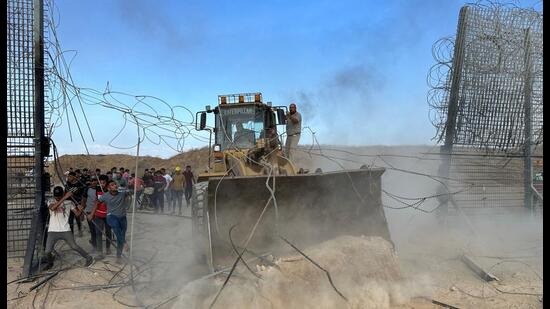Israeli officials obtained Hamas’s battle plan for the Oct. 7 terrorist attack more than a year before it happened, documents, emails and interviews show. But Israeli military and intelligence officials dismissed the plan as aspirational, considering it too difficult for Hamas to carry out.
The approximately 40-page document, which the Israeli authorities code-named “Jericho Wall,” outlined, point by point, exactly the kind of devastating invasion that led to the deaths of about 1,200 people.
The translated document, which was reviewed by The New York Times, did not set a date for the attack but described a methodical assault designed to overwhelm the fortifications around the Gaza Strip, take over Israeli cities and storm key military bases, including a division headquarters.
Hamas followed the blueprint with shocking precision. The document called for a barrage of rockets at the outset of the attack, drones to knock out the security cameras and automated machine guns along the border, and gunmen to pour into Israel en masse in paragliders, on motorcycles and on foot — all of which happened on Oct. 7.
The plan also included details about the location and size of Israeli military forces, communication hubs and other sensitive information, raising questions about how Hamas gathered its intelligence and whether there were leaks inside the Israeli security establishment.
The document circulated widely among Israeli military and intelligence leaders, but experts determined that an attack of that scale and ambition was beyond Hamas’s capabilities, according to documents and officials. It is unclear whether Prime Minister Benjamin Netanyahu or other top political leaders saw the document, as well.
Last year, shortly after the document was obtained, officials in the Israeli military’s Gaza division, which is responsible for defending the border with Gaza, said that Hamas’s intentions were unclear.
“It is not yet possible to determine whether the plan has been fully accepted and how it will be manifested,” read a military assessment reviewed by The Times.
New York Times









